1lumen selects and reviews products personally. We may earn affiliate commissions through our links, which help support our testing.
Thrunite T3 review

Thrunite T3 specifications
| Brand & Model | Thrunite T3 |
|---|---|
| Flashlight category | EDC |
| LED | Luminus SST-40 |
| Max. output | 2250 lumens |
| Max. beam distance | 301 meters |
| Max. beam intensity | 22,680 cd |
| Battery config. | 1*21700 4000mah |
| Onboard charging | USB-C |
| Modes | 3 |
| Blinkies | Strobe |
| Waterproof | IPX8 |
| Review publication date | November 2022 |
Introduction:
Having briefly used the Thrunite T2, I thought I knew what to expect when it came to the next numerical iteration. Boy, could I have been more wrong. The T2 is an XHP70 flooder and the T3 is an SST-40 thrower. The T2 gives you deep cuts for a rugged feel, while the T3 feels much more refined. I am a huge fan of seeing new models of existing lights and how the company decides to move forward with their design and performance. Let’s dive in and see if this is an incremental change or if the two couldn’t be further from each other.
Package quality.
The Thrunite came to me in a very thick cardboard box. The top lifts completely off and you are presented with the light, wrapped in plastic, nestled in foam. Underneath that, you have your accessories. The packaging is very well done and will hold up well over time.
- Thrunite T3
- Holster/Pouch
- Lanyard
- Spare O-Rings
- USB-C Cable
- Manual
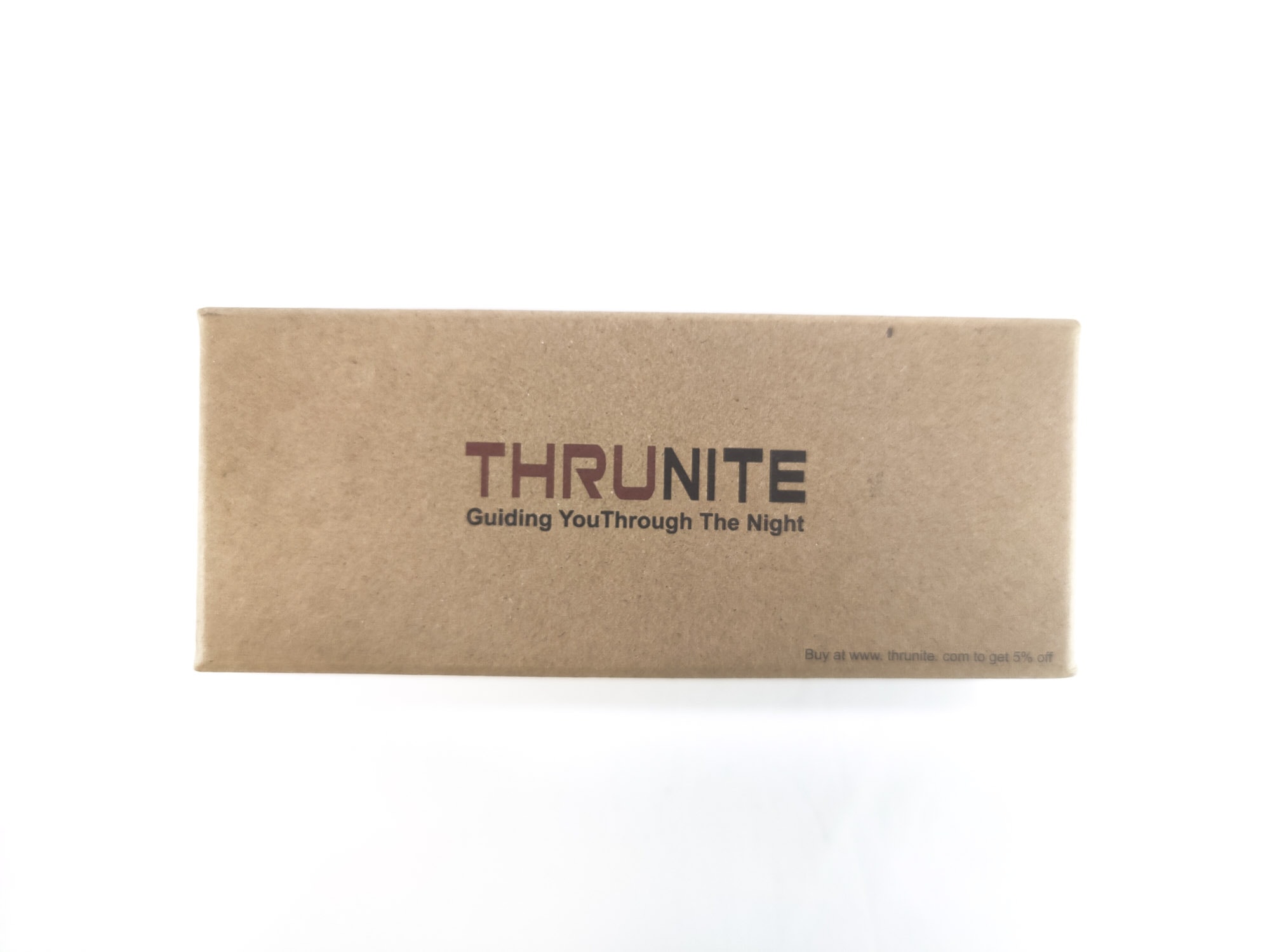
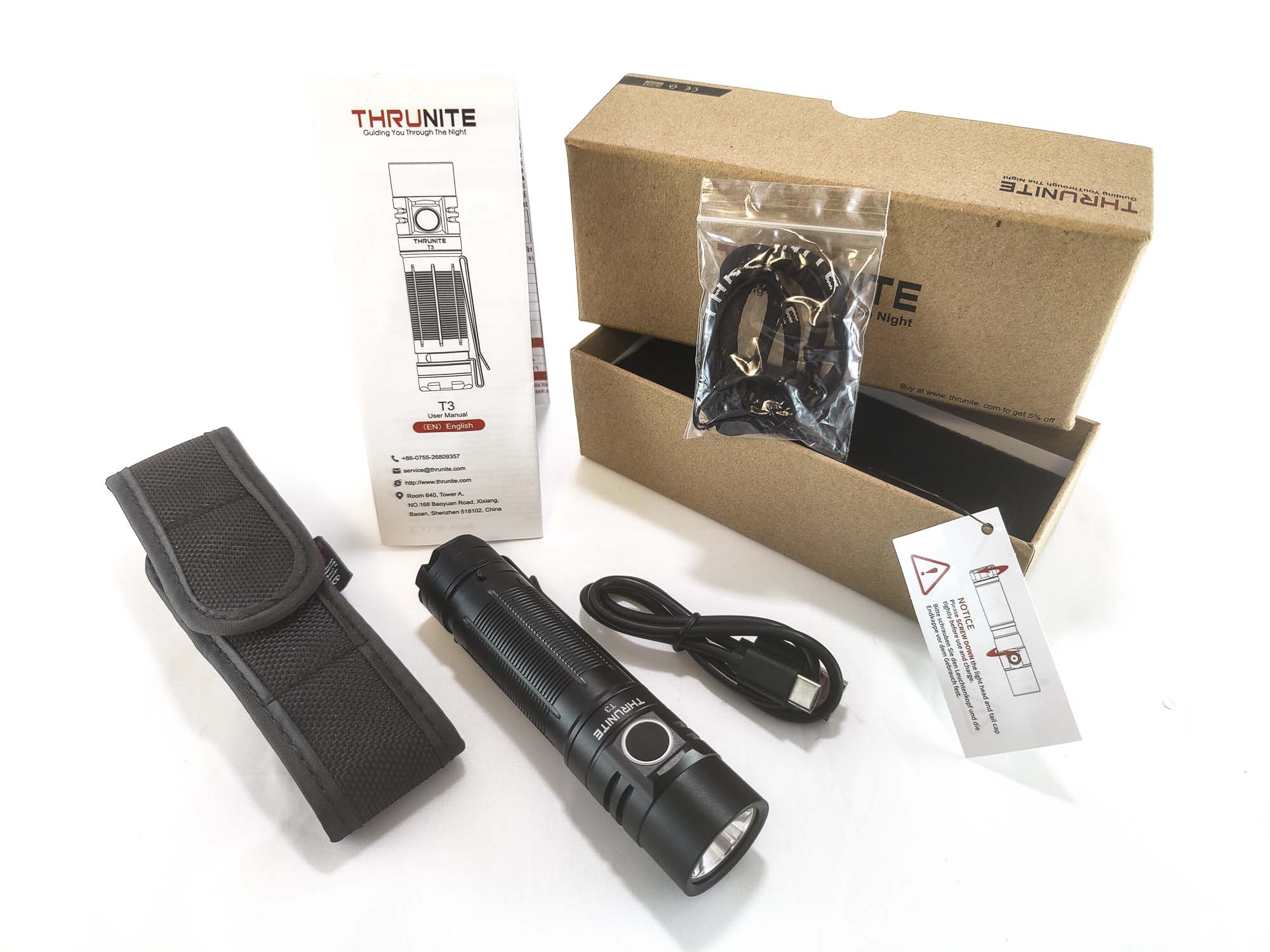
Flashlight in use
The Thrunite T3 is, for its size, an incredibly sleek light. Large enough to house a 21700 cell, but more narrow than a 26650 cell, it feels very slender in the hand. The shallow machining provides plenty of grip, yet each cut is in close proximity which keeps it from feeling rough.
The button and the charging port keep this light from being perfectly round and, if the pocket clip is not on, these would be the only thing keeping it from rolling around. The button is a backlit e-switch and the light tells of the charge level of the battery.
The light is a little large for discreet pocket carrying, but still fits just the same and isn’t inherently uncomfortable. It is flat on the tail so it will tail stand as long as you need it to and if you so choose, you have three carrying options provided by the factory. The included lanyard is of better quality than what is usually provided with lights. It is fabric wrapped and branded. The actual provision for the lanyard is a single recessed hole that is perpendicular to the body of the flashlight. It is elongated slightly to allow you to be able to easily install or remove the lanyard.
The holster that also accompanies the T3 also seems to be of high quality. The sides are elastic and allow it to fully squeeze the light in an attempt to keep it still. The only thing I would change is to have fabric/nylon covered magnets holding the cover. Velcro makes too much noise in a hurry. Finally, the third carry option is the pocket clip I spoke of earlier. It is a 2 way clip with a deep throat that would almost completely hide the entire light in your pocket. It seems to provide good retention and is on the more “springy” end of metals they could have used. The anodizing on the body and pocket clip match perfectly.
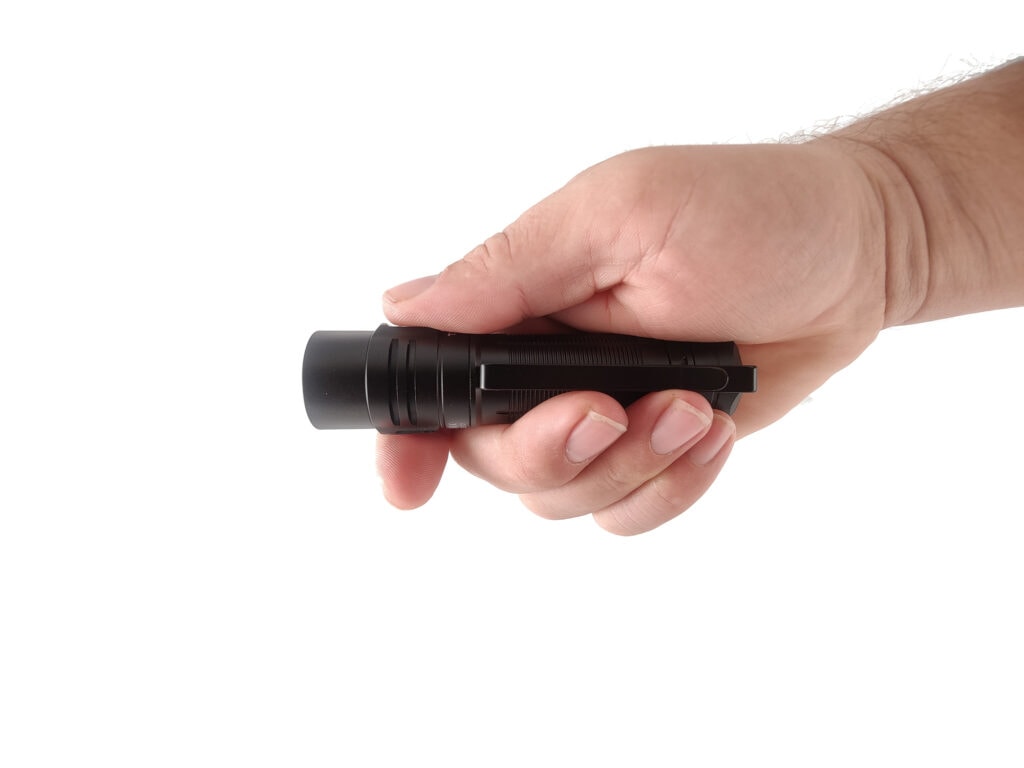
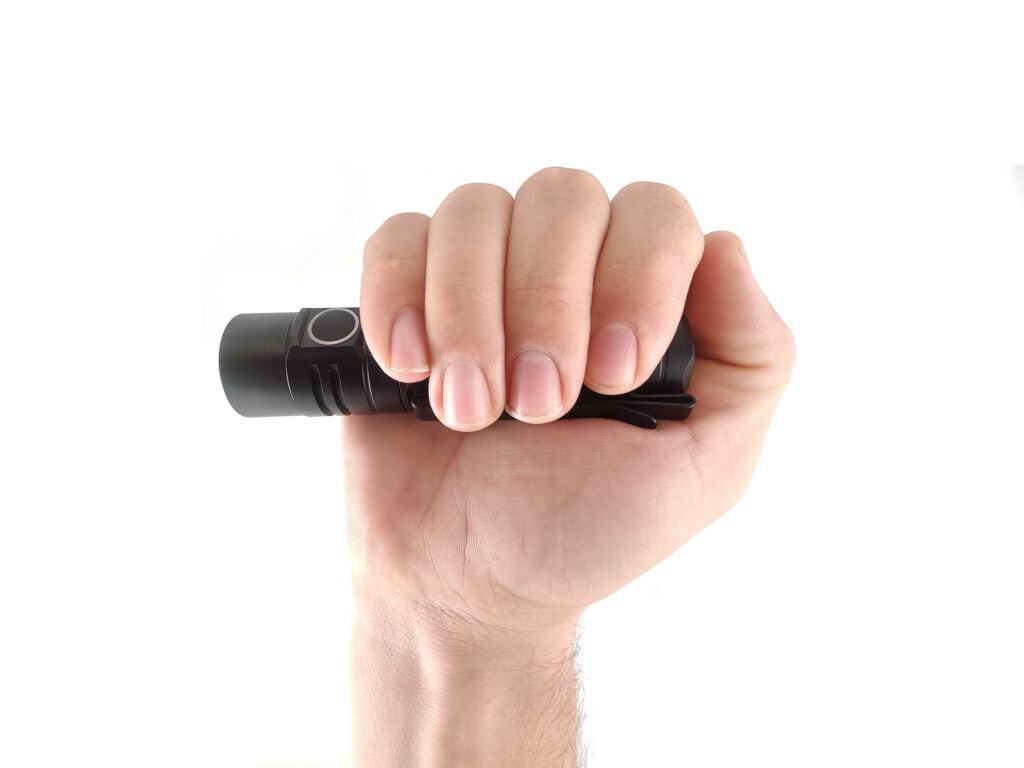

Build Quality, and Warranty
In usual flashlight form, the T3 is made from 6061-T6 aluminum and covered with a Type III hard anodize coating to protect itself from surface abrasions and wear. The actual look of the finish is left with a light sheen to it. Not overly glossy by any means, but you do notice a small amount of light reflection. That process does continue through onto the well machined, square cut thread on the head side of the body tube as well. The threads are anodized, which does provide the option to mechanically lock out the T3 for long term storage or travel.
There are deeper cuts into the head that seem to serve as cooling fins and a raised button that stands pretty flush with the plateau on this ridge. The elongated machining and grooves on the body tube make for a nice appearance as well as plenty of grip. Below these grooves is a channel for the pocket clip and a chamfered hexagonal cut on the tail cap. They are inset so they don’t actually serve any sort of purpose other than aesthetics. One flat on this lower hexagon pattern holds a stretched lanyard hole and upon trying to attach the lanyard, it was apparent just how much easier it is with just the slightest amount more room.
The lanyard is relatively soft to the touch and felt quite sturdy, even after much repeated pulling to test its durability. Finally, the pocket clip is done VERY well. I don’t personally pocket carry 21700 lights often, but the pocket clip is a deep carry and has a good amount of springiness to it. It reminded me of the Olight pocket clips, and this is not a bad thing at all.
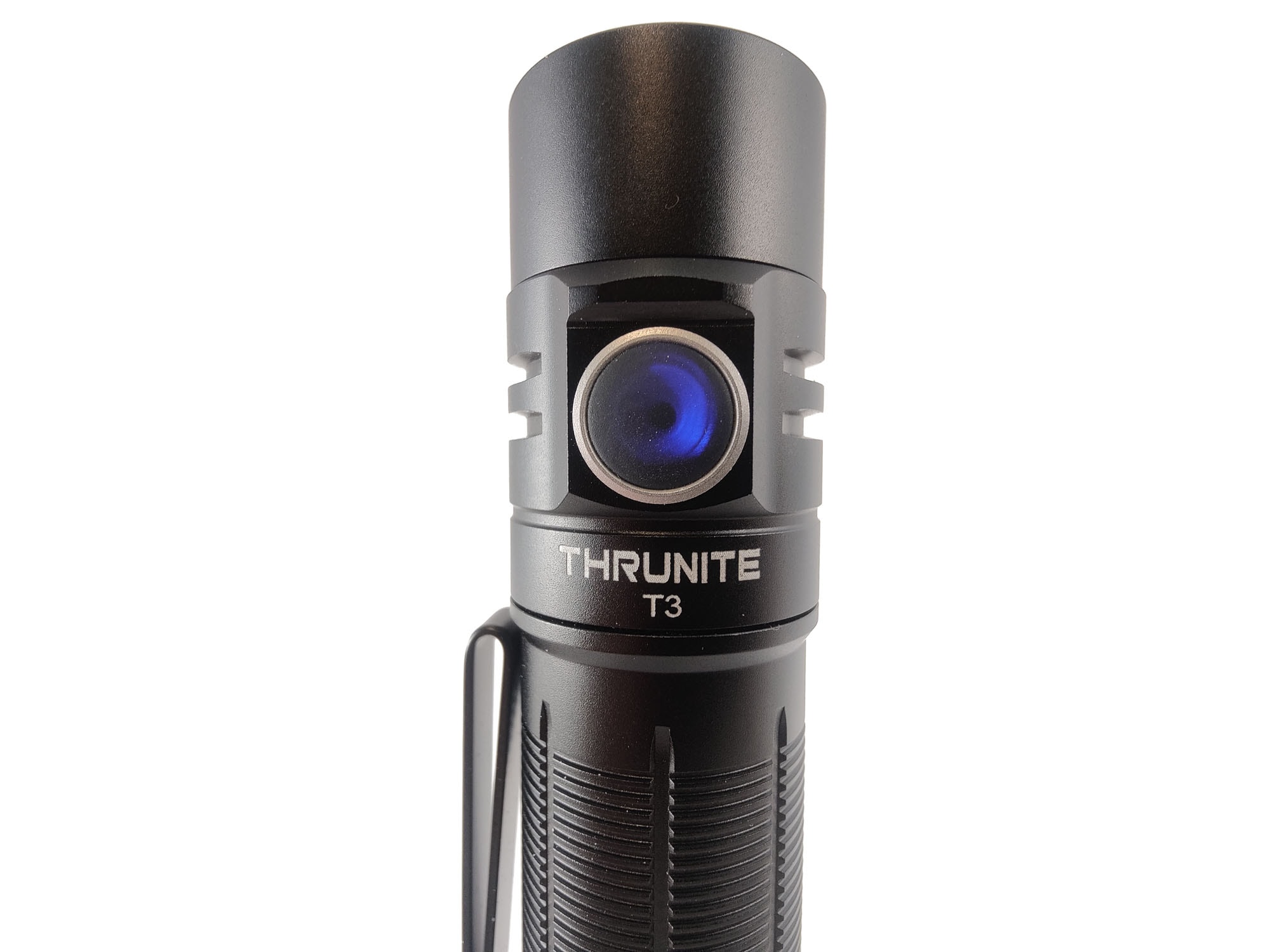
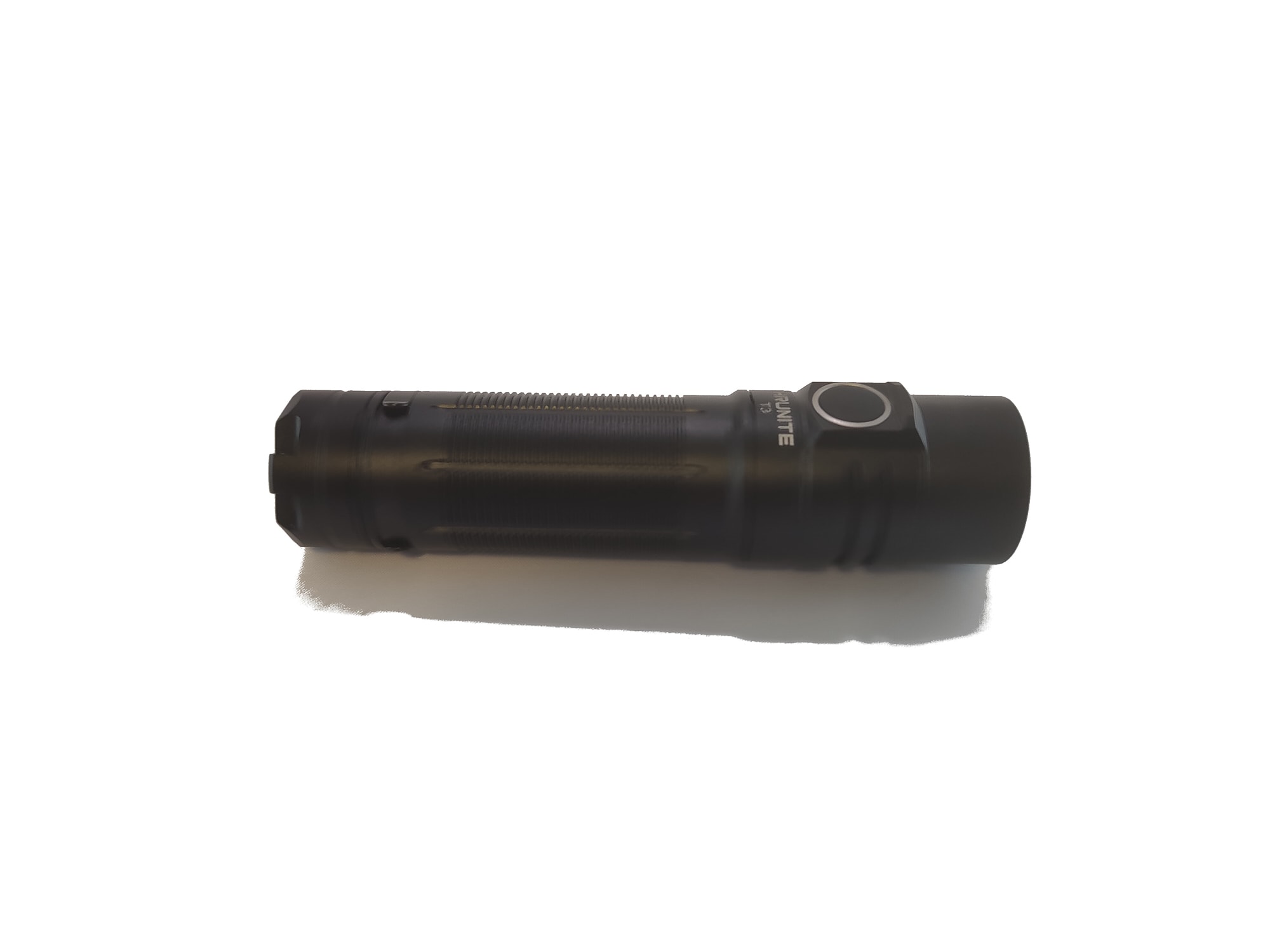
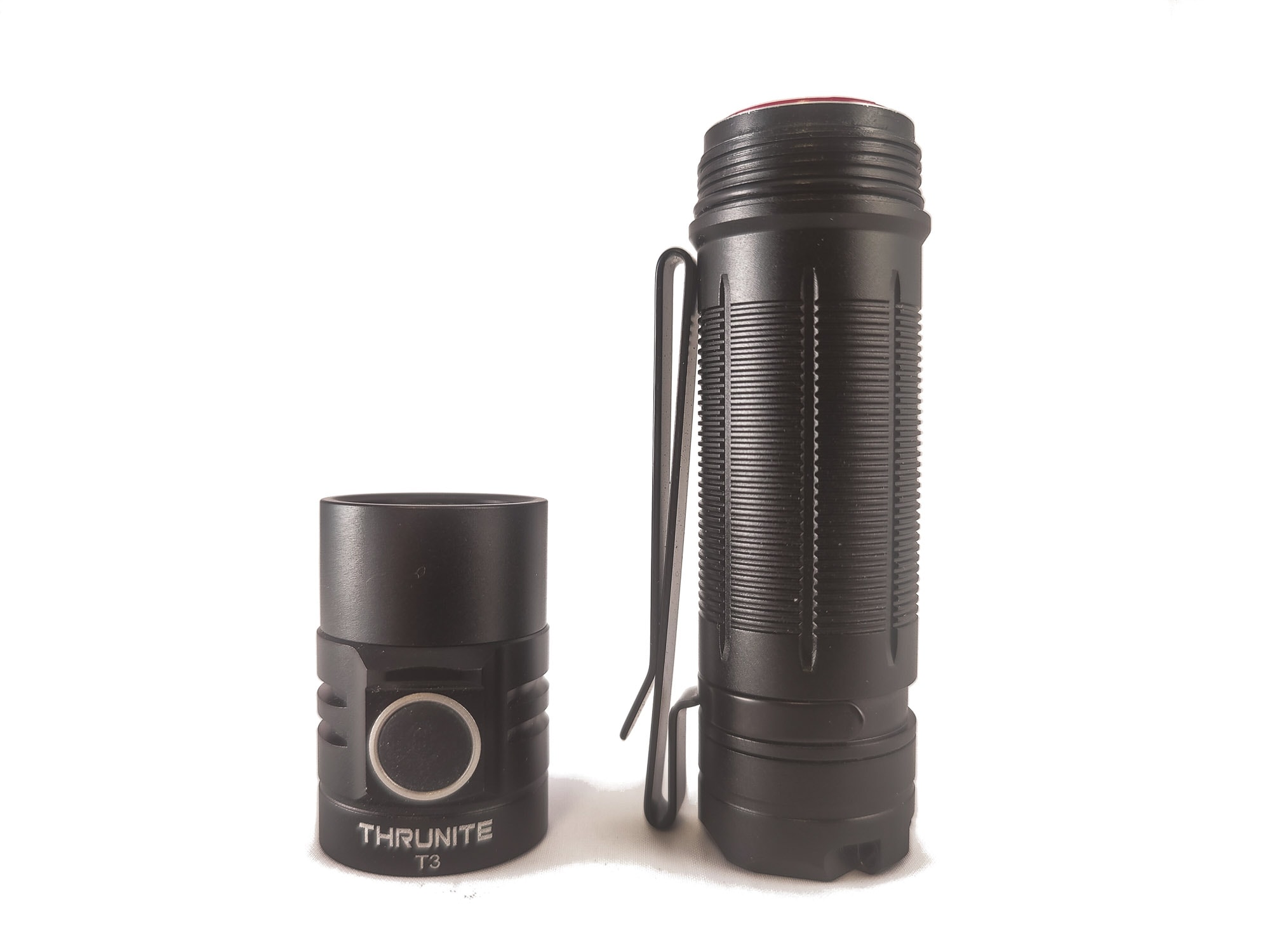
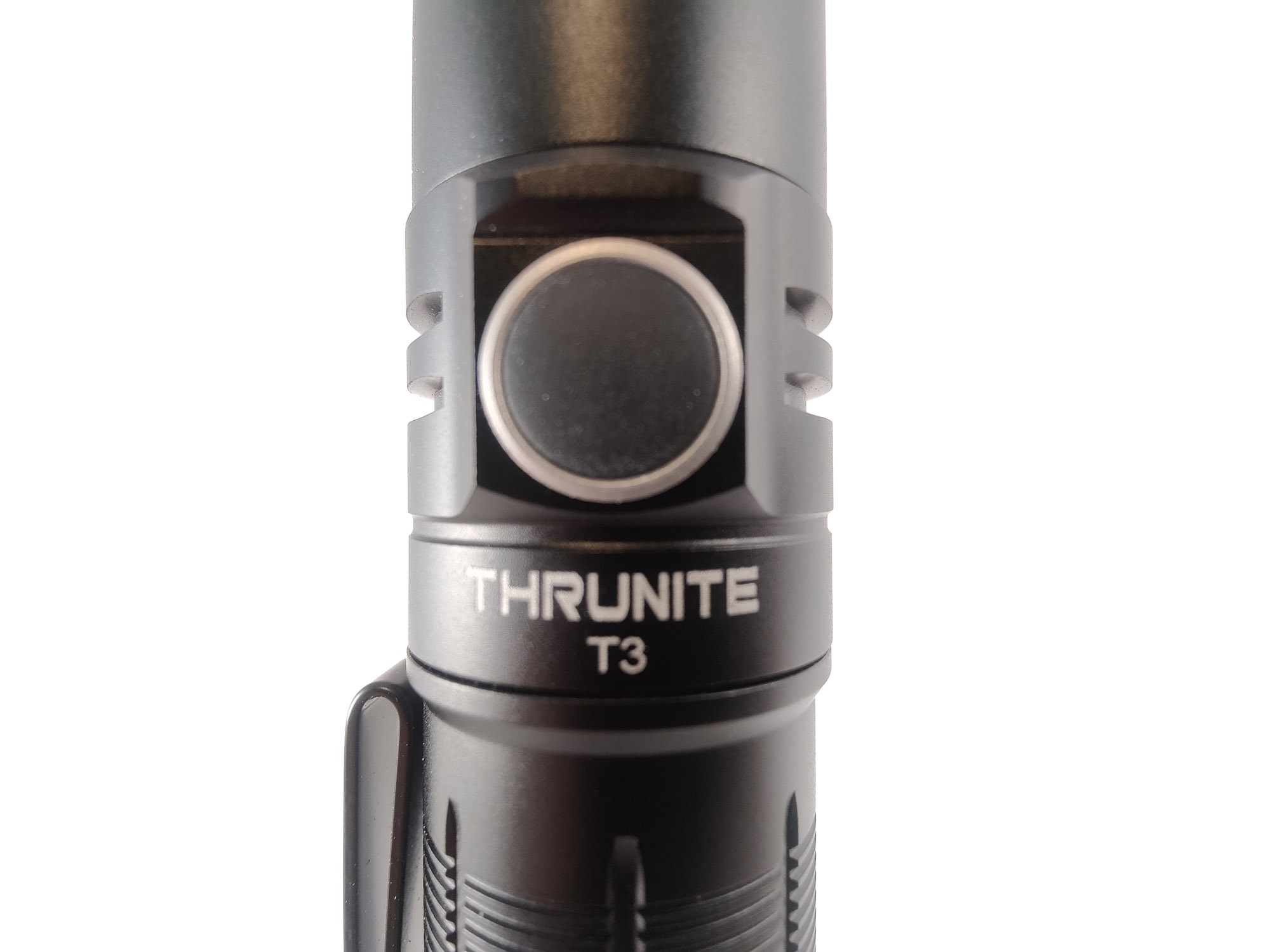
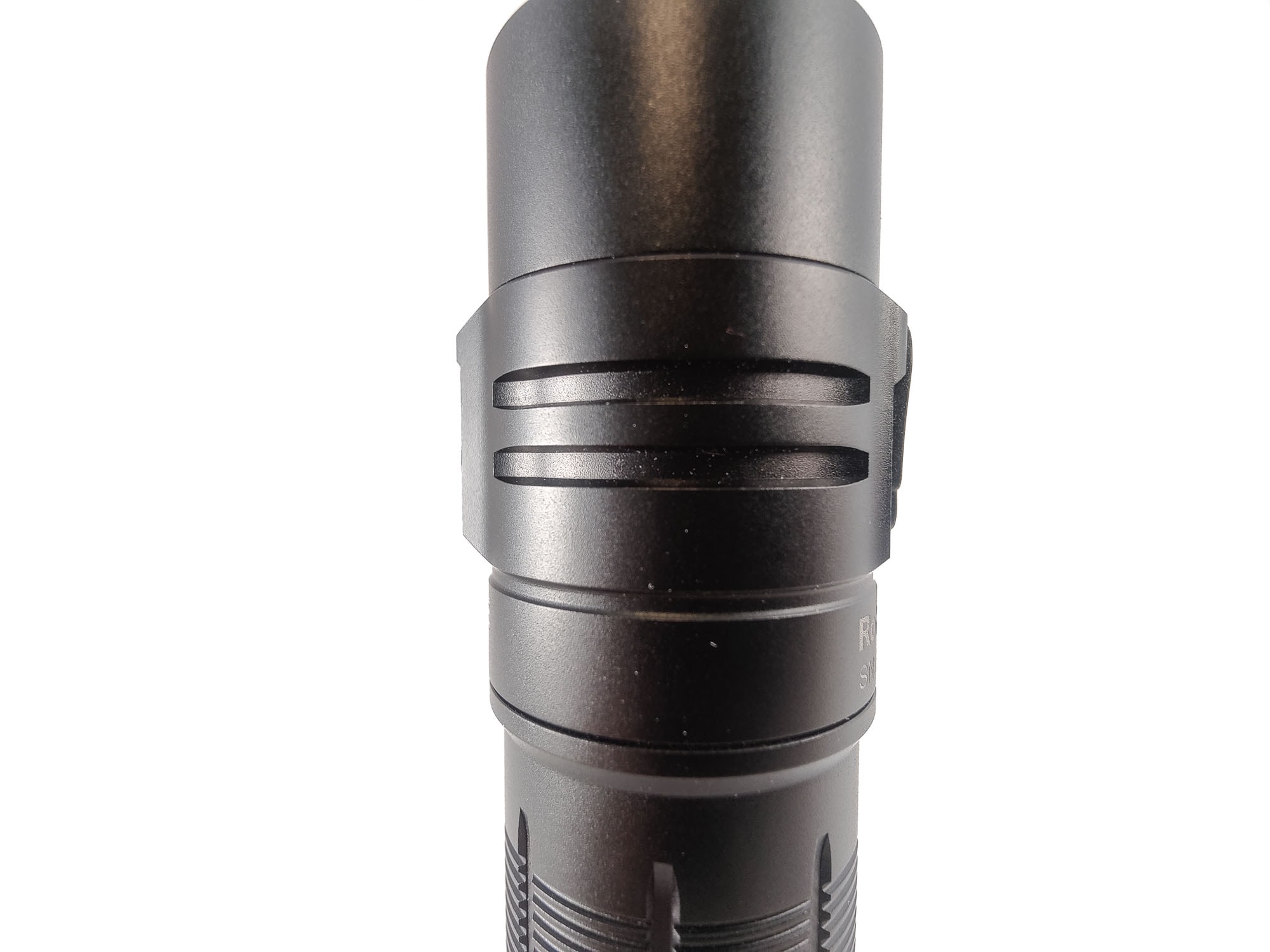
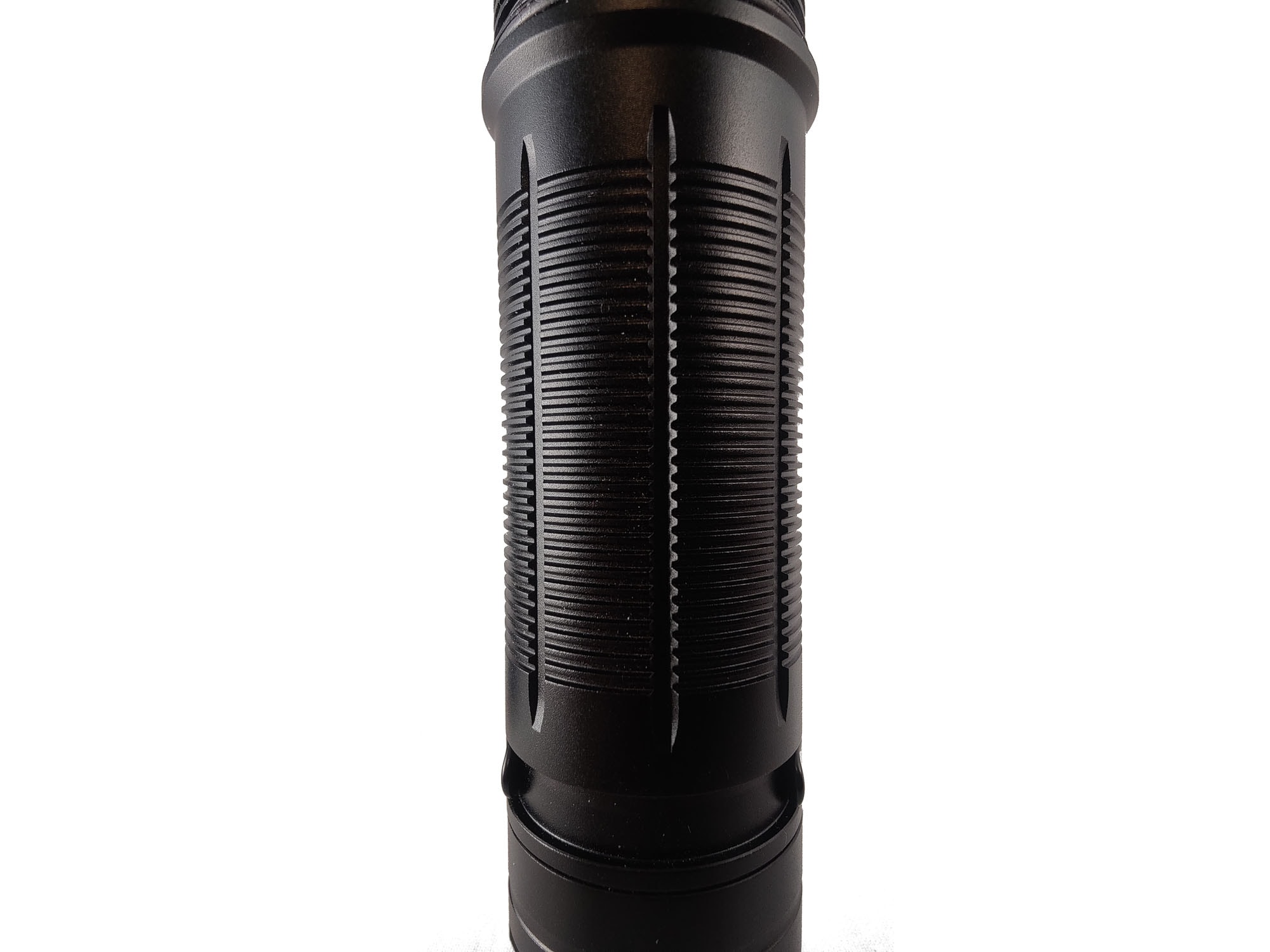
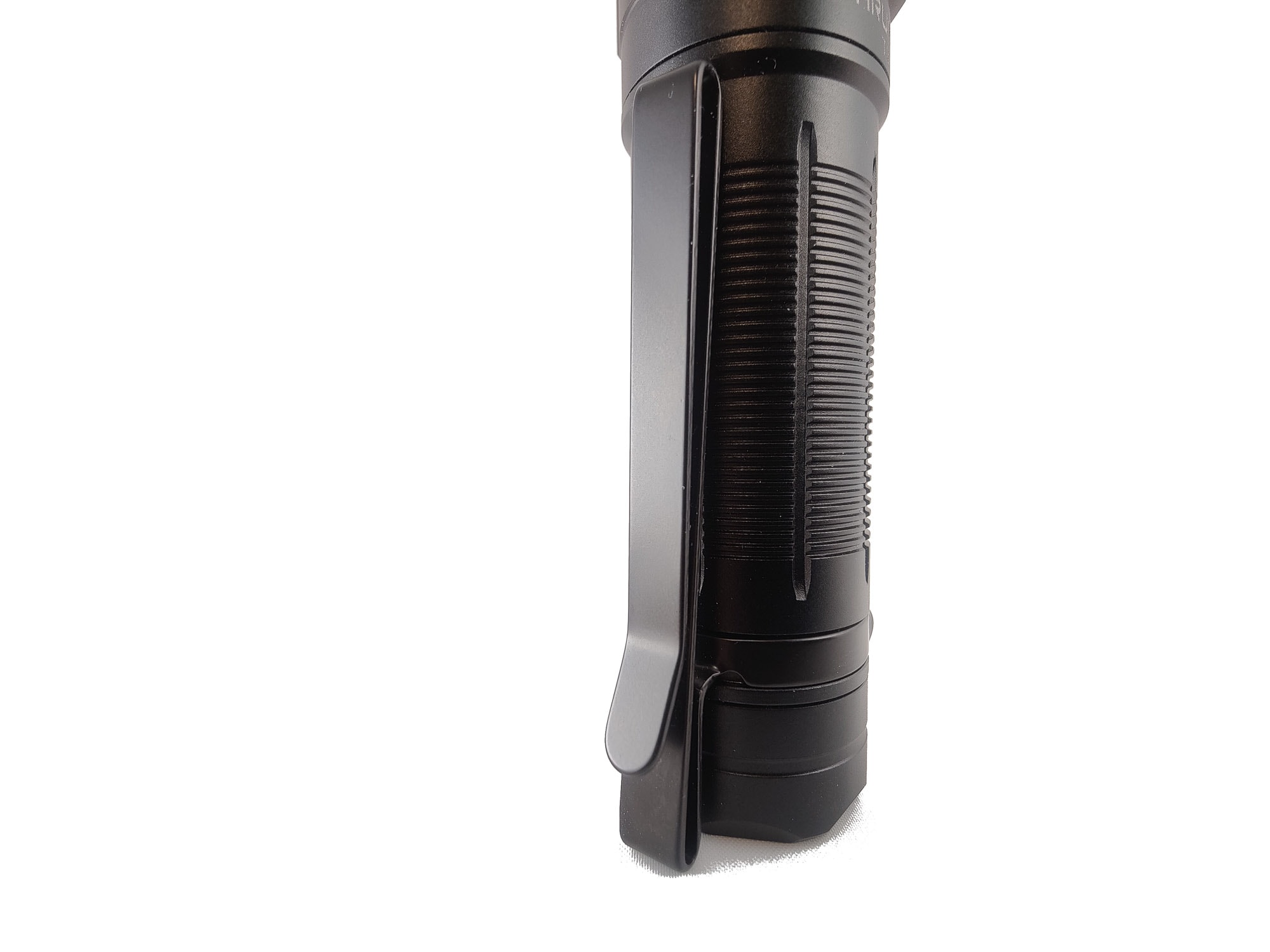
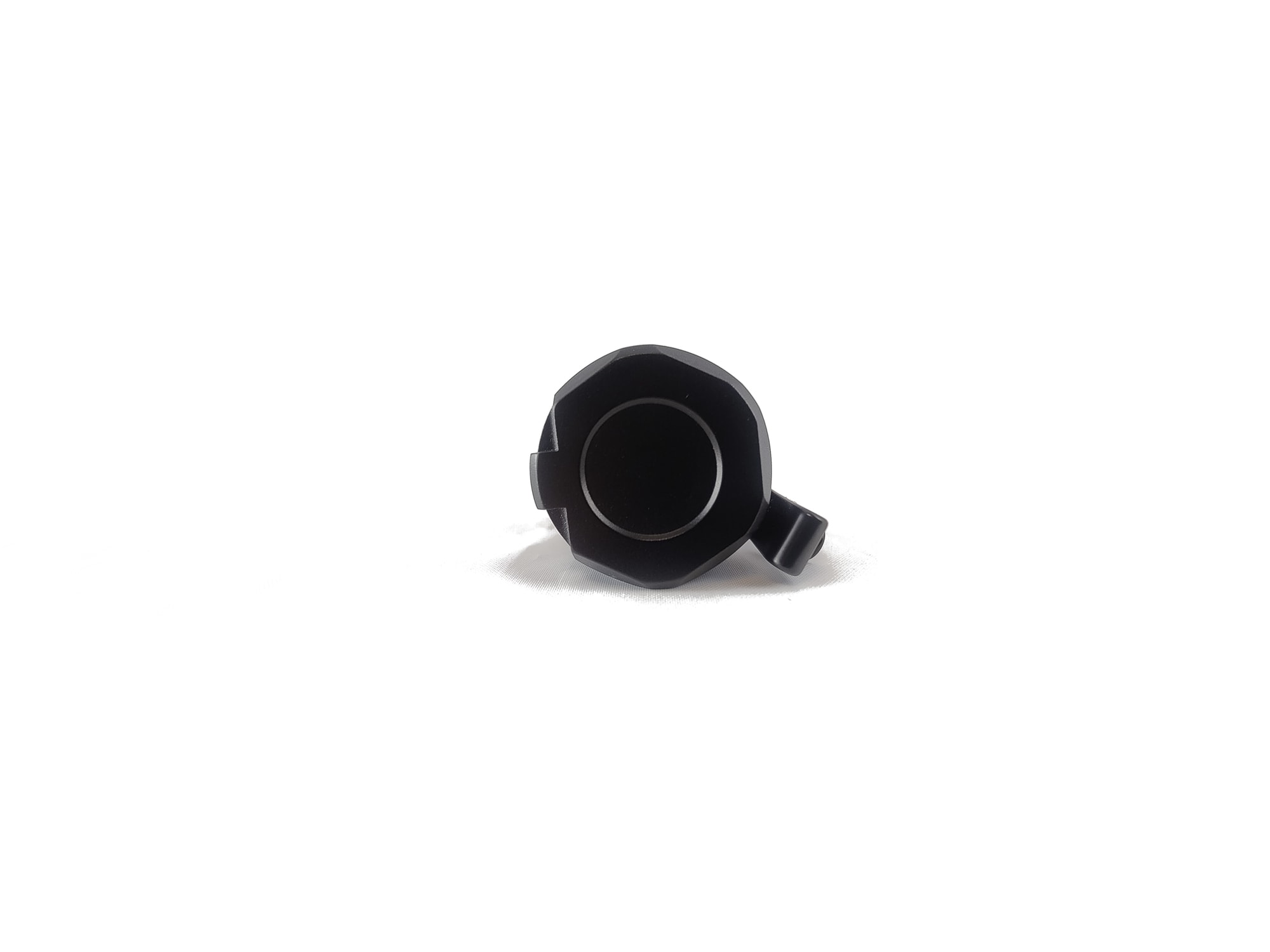
LED, Lens, Bezel, Beam, and Reflector
As stated earlier, this particular light is housing a Luminus SST-40 LED, paired with a smooth reflector to give you more throw than flood, and helps every bit with getting all the way out to the specified 301 meters. This particular emitter, or its domeless brethren the SFT-40, are used quite frequently and that is because they just work.
There is a glass lens to keep everything protected and the glass itself is protected by a raised edge on the bezel. Nothing fancy here, but everything is solid. The bezel is also glued in place to prevent unauthorized access into the reflector. As far as the beam goes, it did appear to be a slightly lower temperature rating than higher up, and after using the Opple Lightmaster Pro, this is confirmed. The temperature rating came in at around 5350K on low and jumped up ever so slightly to almost 5700K on high and turbo.
The hotspot is pronounced, but with soft edges and there is a usable amount of spill, but this is most definitely not a flooder. The color rendering is lower than I would have liked it to be, but that is the case with most of the SST-40 emitters except for the occasional specialty lineup.

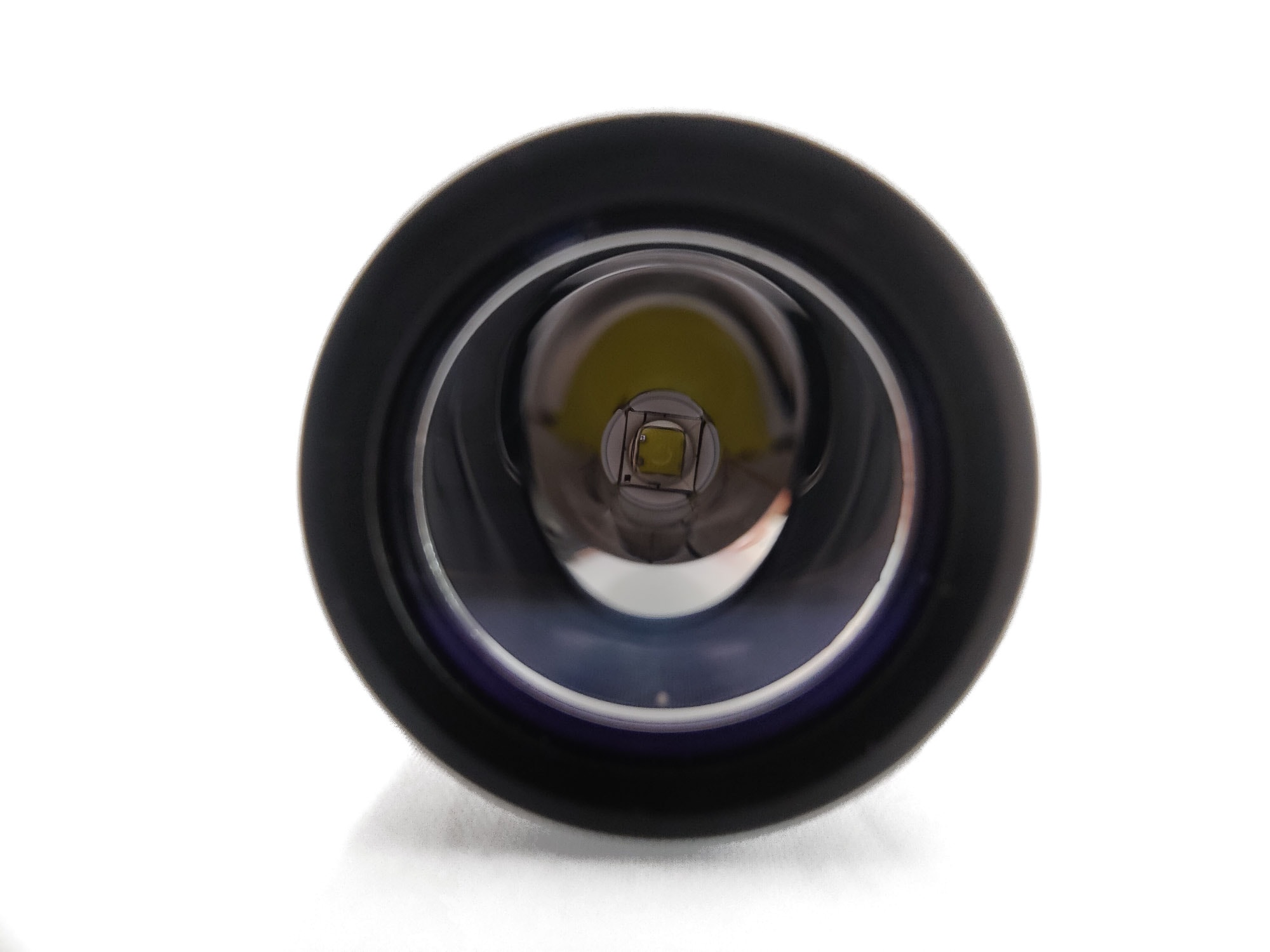
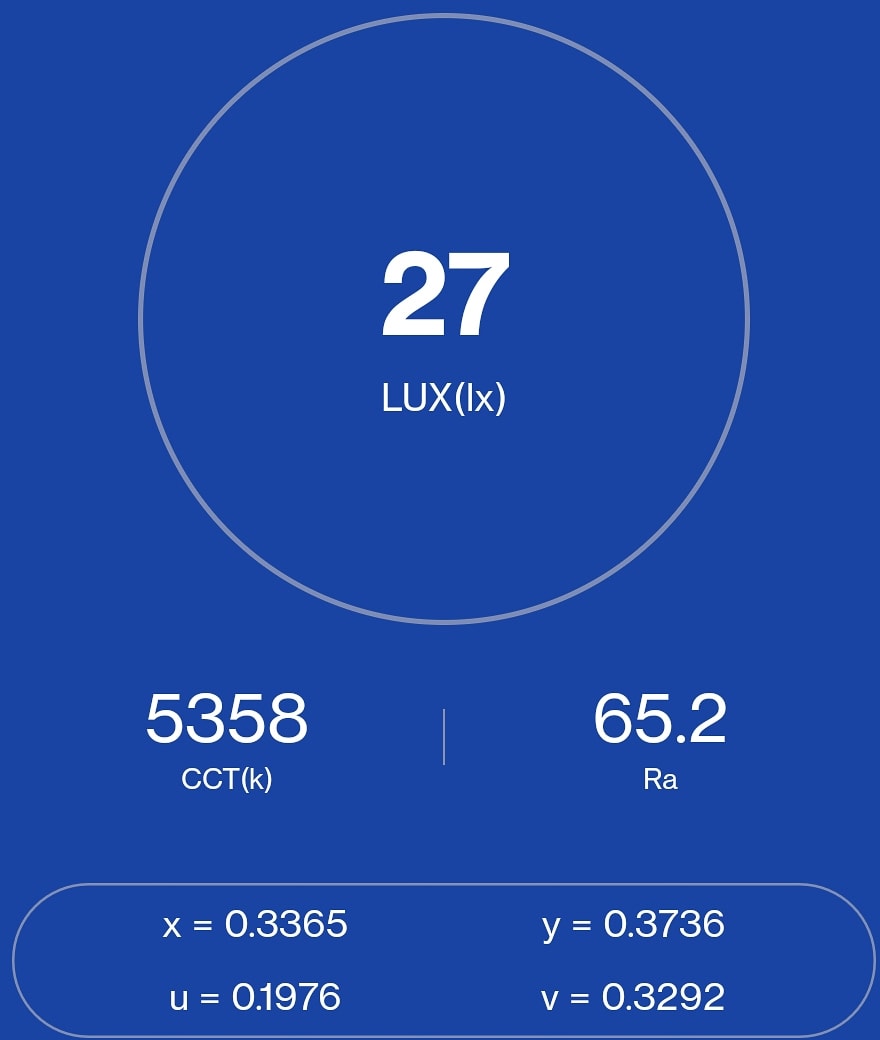
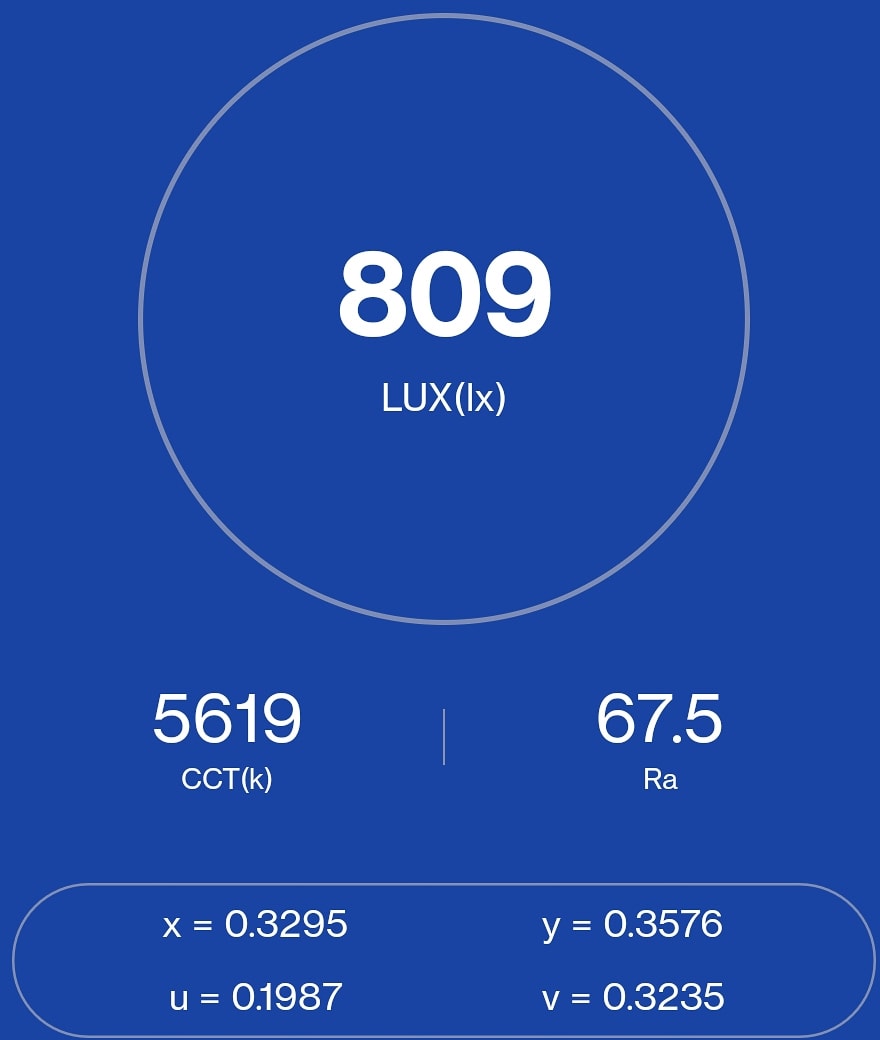
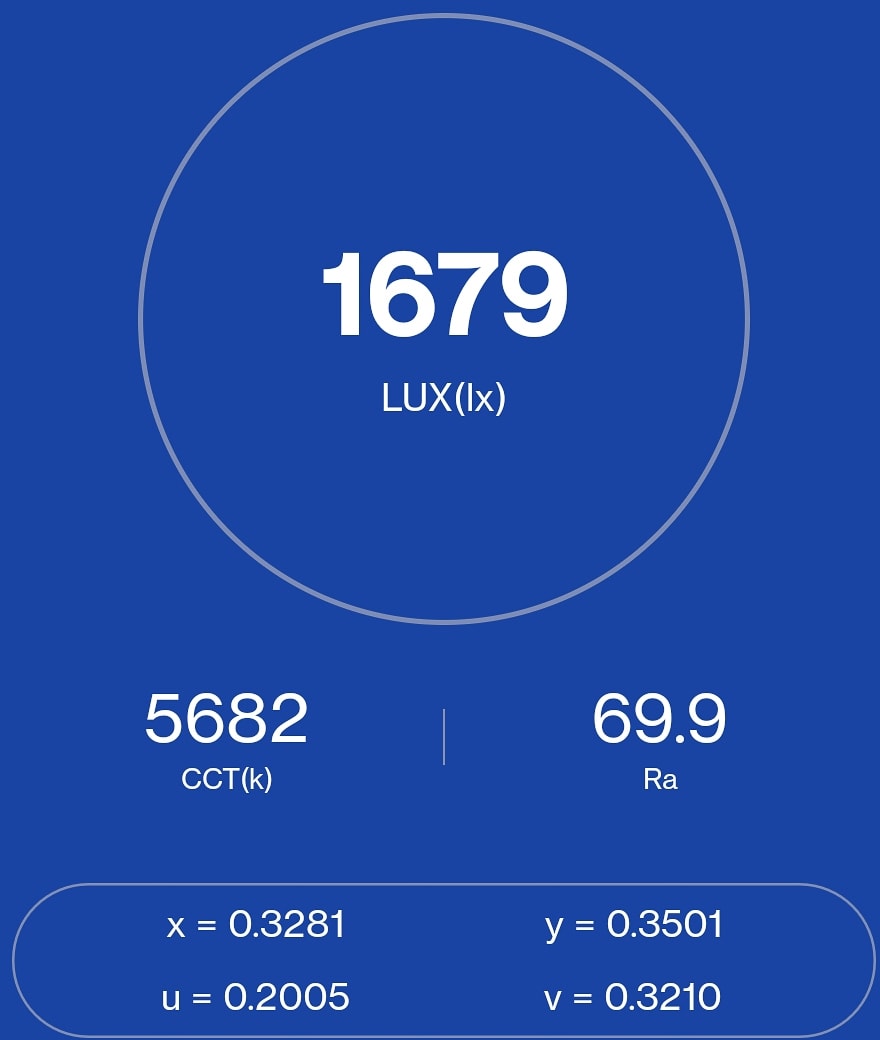
Dimensions and size comparison
Dimensions:
| Millimeters | Inches | |
|---|---|---|
| Length | 116 mm | 4.6 in |
| Head diameter | 28 mm | 1.1 in |
| Body diameter | 26 mm | 1 in |
Dimensions are rounded to the nearest millimeter, and to the nearest tenth of an Inch.
Weight:
| Weight in grams | Weight in Oz | |
|---|---|---|
| Without battery: | 78 g | 2.8 oz |
| With battery | 151 g | 5.3 oz |
Weight is rounded to the nearest gram, and to the nearest tenth of an oz.
Flashlight size comparison with its competition:
Comparisons for the Thrunite T3 include the Sofirn SC18, Wurkkos FC13, Thrunite T3 and the Emisar D4V2
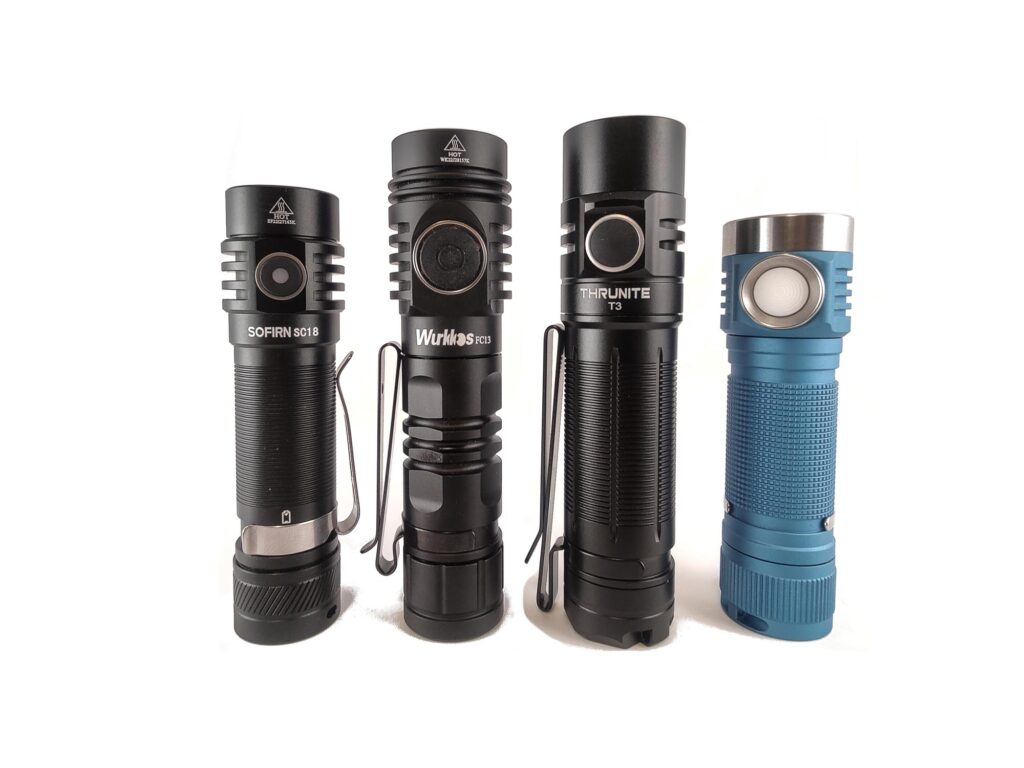
Driver & User Interface:
The user interface in the Thrunite T3 is quite simple. It gives you the option to have shortcuts to firefly (more commonly known as moonlight), turbo and strobe in a series of button presses, but other than that, only lets you ramp between a set floor and a set ceiling.
Available modes:
- Firefly, infinity Low, Infinity High, Turbo
Available blinky modes:
- Strobe
From OFF:
- Press and hold: Firefly mode (moonlight)
- Single click: Turn on to last mode used
- Double click: Turbo from any mode
- 3 clicks: Strobe from any mode
From ON:
- Press and hold: Ramp up or down from current level
- 1 click: Turn off light.
- Double click: Turbo mode
- 3 clicks: Strobe mode
Mode memory:
- The T3 will maintain its last state.
Shortcuts:
- To Low: Press and hold from off
- To Turbo: double click while on or off
- To Strobe: triple click while on or off
Low voltage warning:
- Battery level indicator in button
- 100%-21% battery – button will be blue
- 20%-11% battery – button will be red
- 10%-1% battery – button will flash red
Strobe/blinkies
- Strobe with three clicks from on or off.
Lock-out mode:
- Press and hold while in firefly mode to activate. Press and hold again to remove lockout.
PWM
- No PWM visible
Batteries & Charging
From Thrunite, the light came with a branded 4000mah, 21700 cell. As far as I can tell, there is no option for the light without a battery. The labeling shows that it does indeed have built in overcharging and discharge protection circuits built in, which is always nice. Since it has these built-in protection measures, the battery is longer than a standard 21700. I did replace the battery with an unprotected cell and found that the spring feels quite a bit more loose inside the battery tube, almost as if I can feel the battery moving. It did pass the “maraca” test (shaking it to see if I hear any noise) and all of these issues are avoided by using the included battery. The battery also charged to full in 2 Hrs and 33 Min from a shut off on a runtime test. This was accomplished at just under 2 amps current. 1.88A, to be exact.
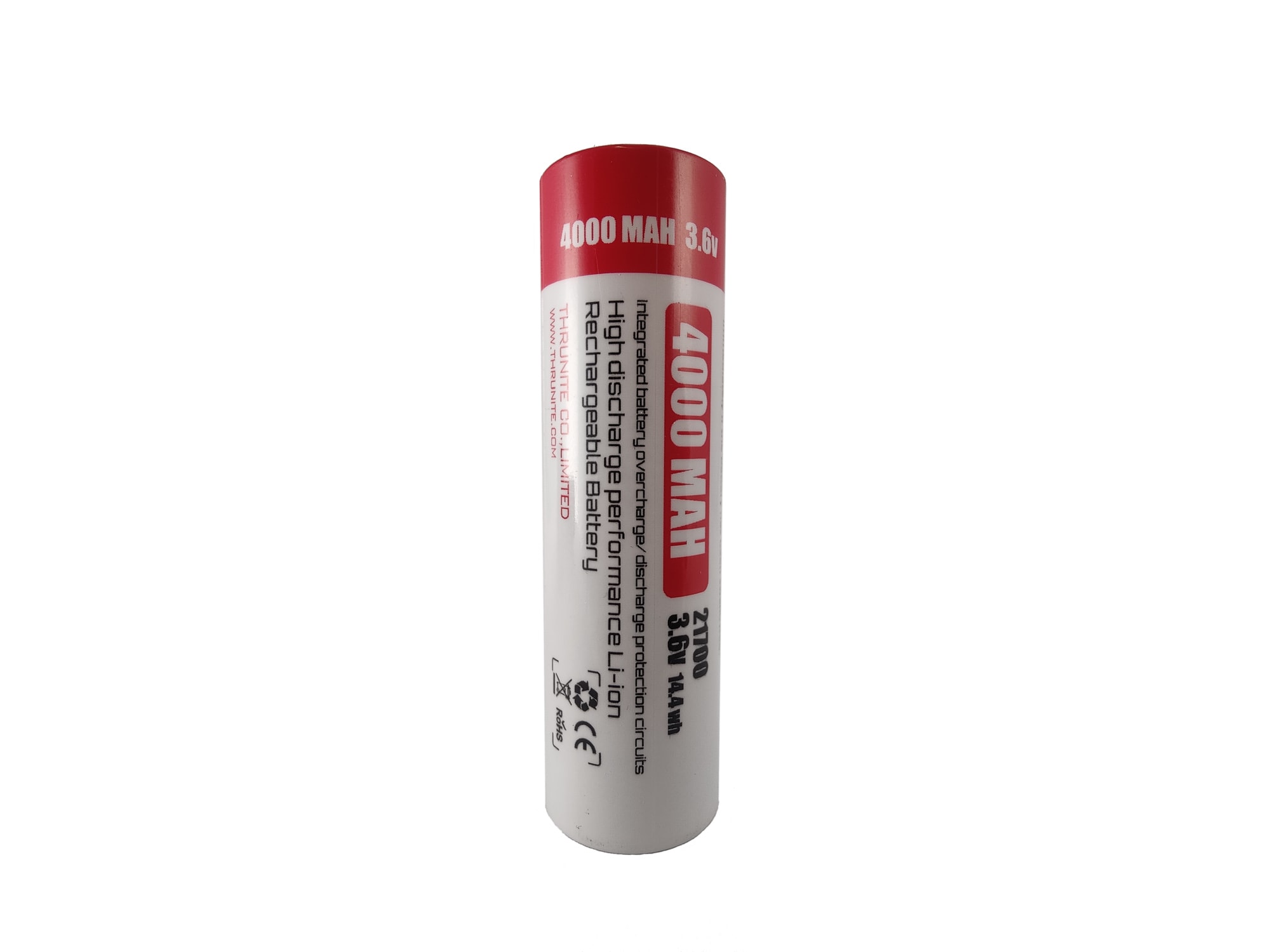
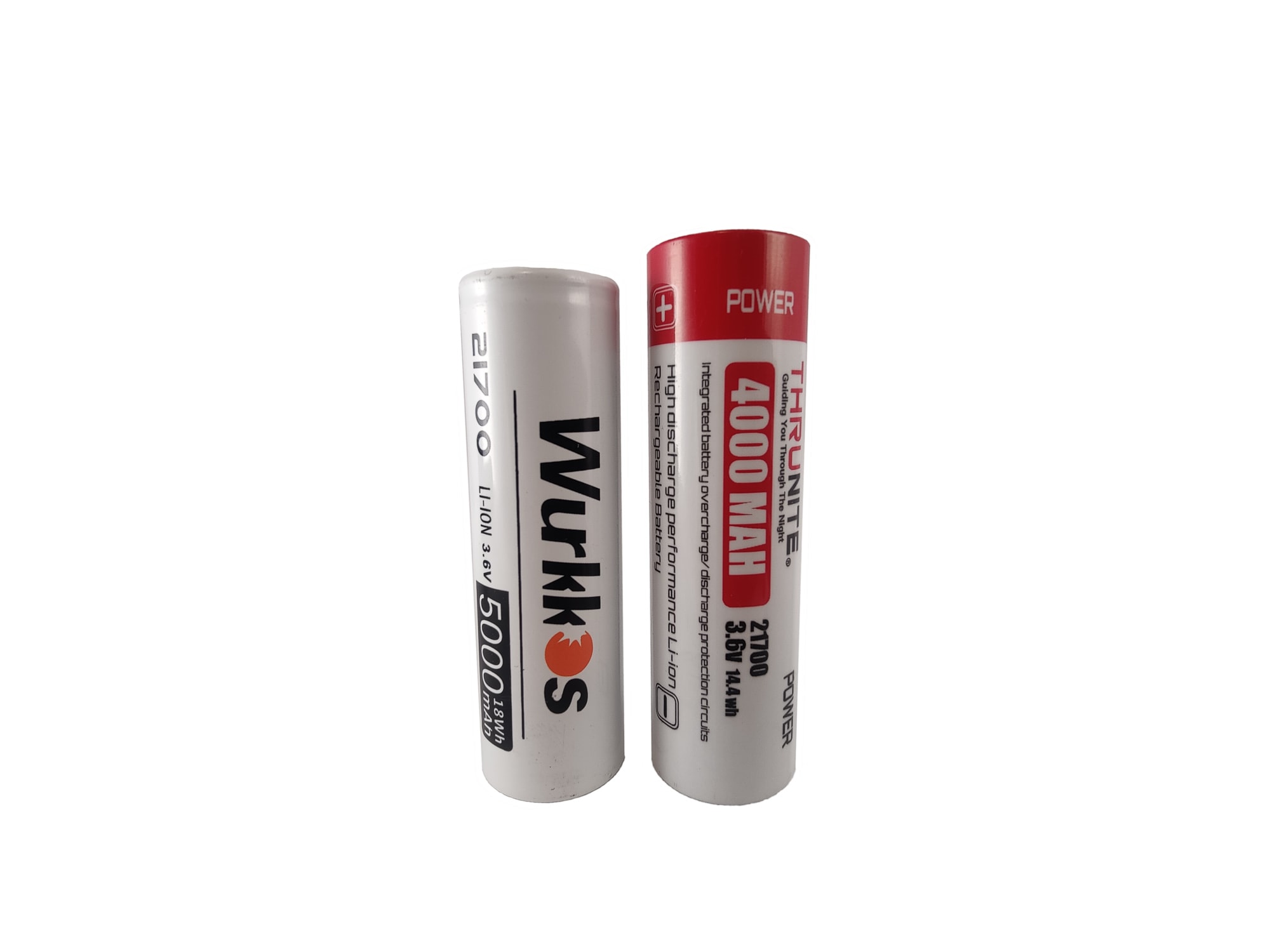

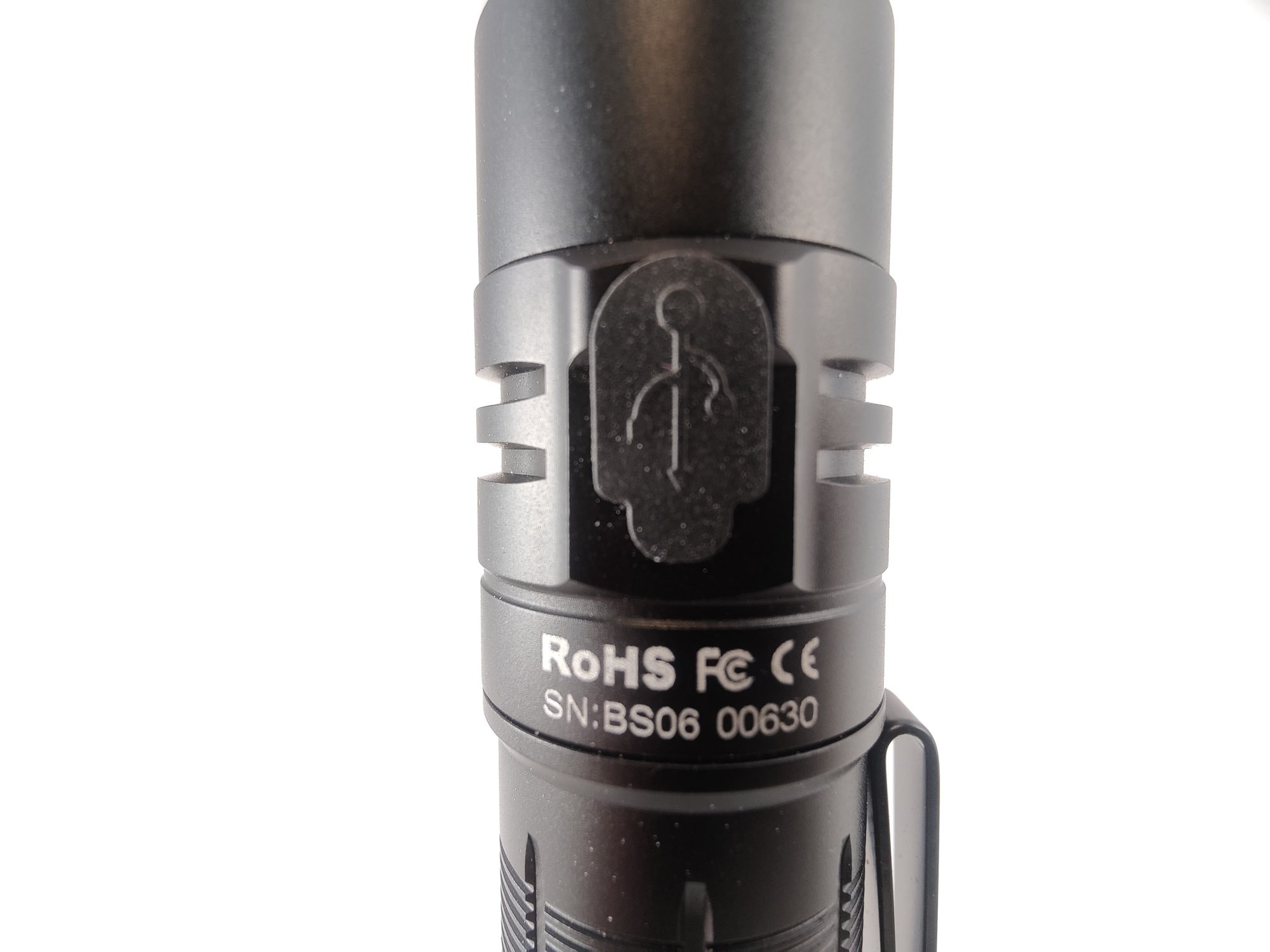

Performance test
Lumen measurements (for each mode)
Output measurements were taken using a purpose-built integrating sphere using an ExTech SDL400. Measurements have been calibrated to a known light source. The Thrunite T3 was fully charged before each test using the included Thrunite 21700 cell.
| Mode | Specified | turn on | 30 sec | 10 minutes |
|---|---|---|---|---|
| Firefly | .44lm | 1lm | 1lm | 1lm |
| Low | 37lm | 39lm | 39lm | 37lm |
| High | 1077lm | 1185lm | 685lm | 612lm |
| Turbo | 2250lm | 2176lm | 821lm | 646lm |
Battery Life: Runtime graphs
All tests were completed using the provided Thrunite 21700 cell battery, fully charged. Modes tested were Firefly, Infinity Low, Infinity High and Turbo. All brightness level in between are stepless and have no specifications.
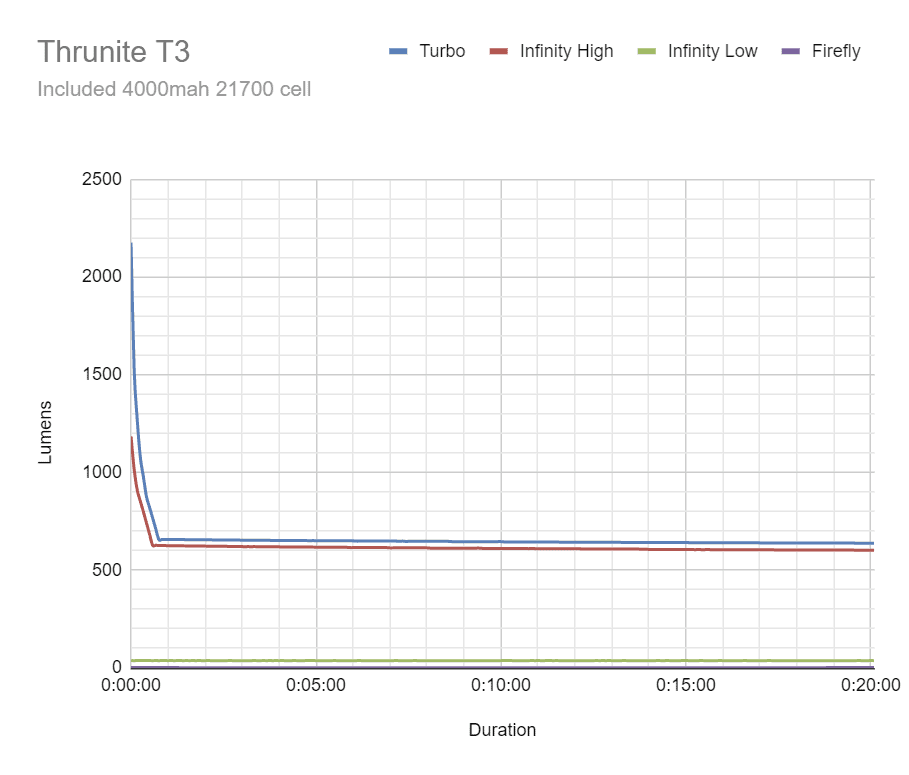
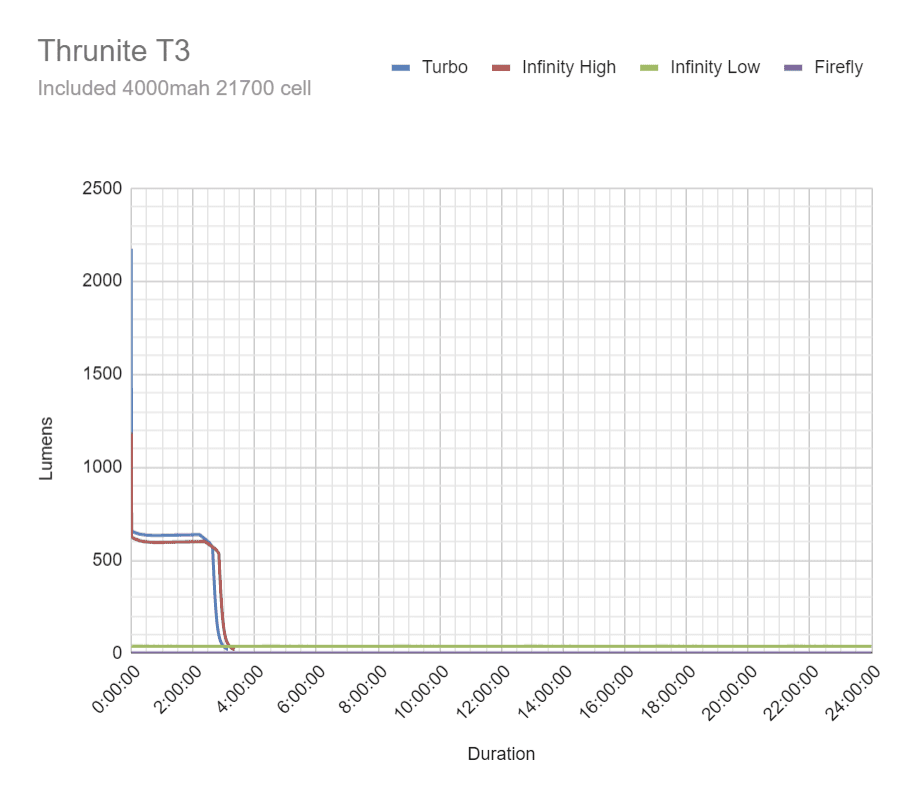
| Mode | Specified | Measured runtime ANSI | Time till shut off |
|---|---|---|---|
| Firefly | 133 days | 24h+ | 24h+ |
| Low | 58h | 24h+ | 24h+ |
| High | 3h 1min | 3h 05min | 3h 21min |
| Turbo | 2h 51min | 2h 52min | 3h 8min |
This is the most accurate specification I have seen in my time performing runtime tests. On turbo, the ANSI runtime was only 1 minute off and on high, it was only 4 minutes off. I have to applaud Thrunite for their accuracy. Low and Firefly were slated to take multiple days, so I opted to close those off after a solid 24 hours to see if there was any unusual behavior. There was nothing out of the ordinary so they were halted.
ANSI FL1 standards: The runtime is measured until the light drops to 10% of its initial output (30 seconds after turning on). This does not mean that the flashlight is not usable anymore. The last column shows how long the light actually works till it shuts off. If there is a + symbol, it means that the test was stopped at that particular point, but the light was actually still running. This happens on certain occasions, with certain drivers, firmware, or batteries.
Peak beam intensity and beam distance measurements
The throw measurements were taken using an Opple Lightmaster Pro at 5 meters at 30 seconds.
| Mode | Specified | Candela measured | Meters | Yards |
|---|---|---|---|---|
| Firefly | N/A | Not registering | — | — |
| Low | N/A | 775 cd | 55 m | 60 yd |
| High | N/A | 14,525 cd | 241 m | 264 yd |
| Turbo | 301m | 18,075 cd | 269 m | 294 yd |
In correlation with the runtime graphs above, turbo drops substantially and it does it very quickly. This could be the cause of the throw in turbo mode being lower than specification. At start up, my calculations showed a throw distance of 298m, which is quite a bit closer to stated figures. This is the figure that Thrunite must have been using when they listed their specifications.
Extra info: Peak beam distance according to ANSI FL1 standards: The calculated value of distance in meters at which the flashlight produces a light intensity of 0.25 lux. (0.25 lux is about the brightness of a full moon shining on an object). Columns Meters and Yards show rounded numbers.
Beamshots
Camera settings and distance: Panasonic Lumix G7 with ISO 5000 and ev0.0 at 70y.
Beamshots of the following flashlights compared:
- Thrunite T3
- Wurkkos WK15
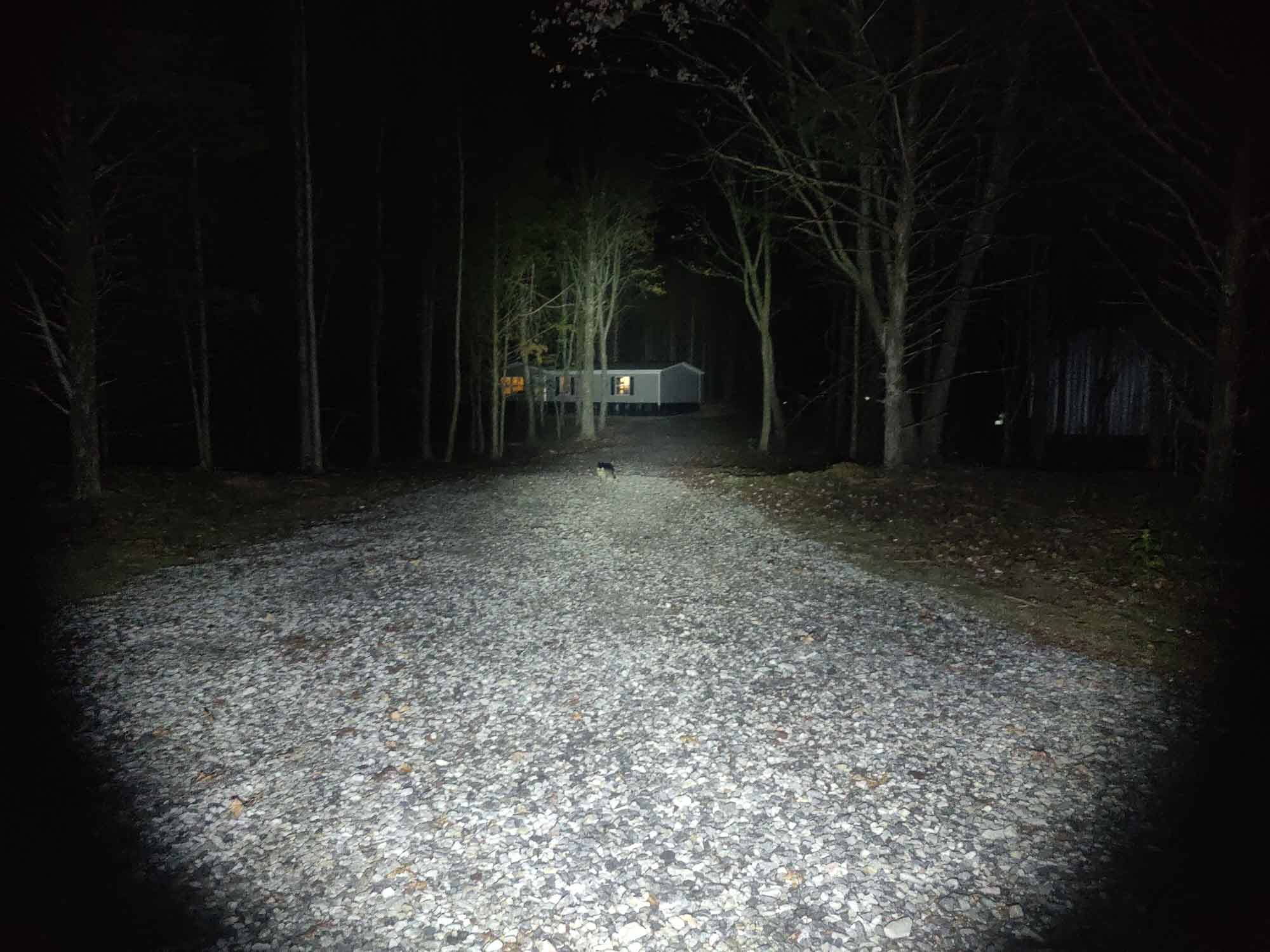
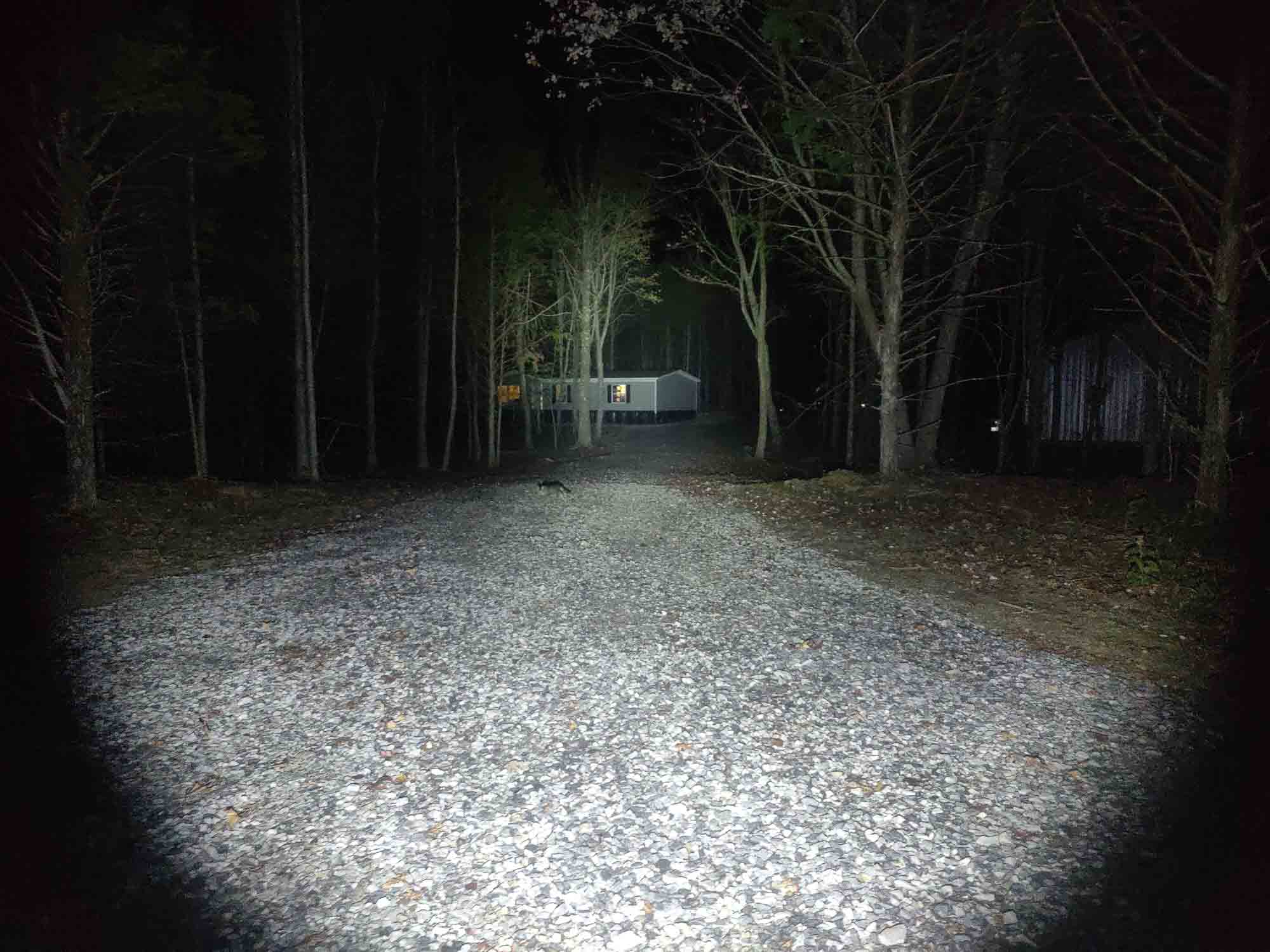
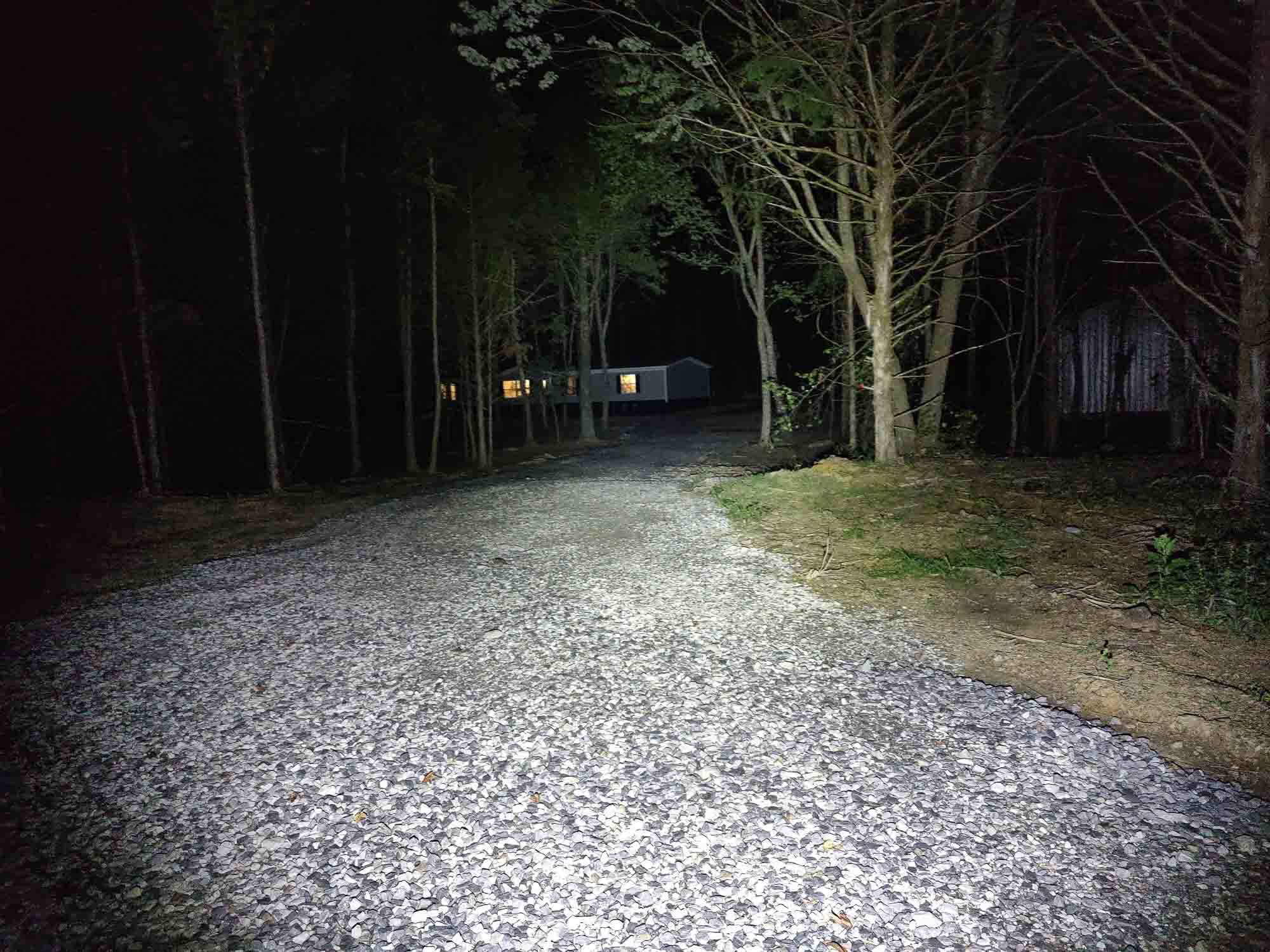
Disclaimer: This flashlight was sent to me for review at no cost by ThruNite. I have not been paid to review, nor have I been holding back on problems or defects.
Final Verdict
Pros
- Fantastic feel
- Very accurate runtimes
- Anodized finished
Cons
- Should have a stepped mode
- Still waiting for the neutral version
Explanation on star ratings:
1: Avoid: a match would be a better choice – 2: Poor: significant defect or issues; almost unusable – 3: Average: some defects or issues; but still usable 4: Good: recommended (minor issues) – 5: Great: highly recommended

4.5 stars: ★★★★⋆
The Thrunite T3 is a generational upgrade to the existing T2, but these two flashlights seem to be going for entirely different approaches altogether. The T2 seems to be aimed at getting light out and just flooding the whole area, while the T3 seems frankly, more refined. The SST-40 allows you to get your light wherever you could need it, over 3 American Football fields away. Frankly, it feels very nice in the hands and looks the part too. Very rugged design cues mixed with great performance makes this a winner in my book, although it could be better with a stepped output mode and a higher CRI, more neutral emitter, in my opinion. The Thrunite is VERY deserving of 4.5 stars
Buy your ThruNite T3 here
1lumen selects and reviews products personally. We may earn affiliate commissions through our links, which help support our testing.